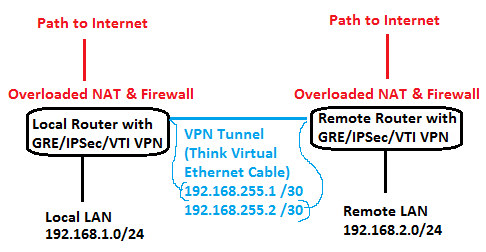10
6
When you have devices with the same static IP addresses on two networks how does a VPN keep them straight?
Example: I have a small network in my home office with 3 computers. I routinely connect to a remote office that has a Sonicwall router w/VPN using the Sinicwall VPN client on my main machine. Once connected, I am still able to access devices on both networks which use static IPs (they are servers.)
Both LANs use 192.168.0.x addressing. When I specify using a device like a server or printer at say 192.168.0.10 how does it determine whether to use the address on my physical local LAN or the one on the remote LAN?
Is it doing NAT translation similar to what the router does when it connects to the Internet?
Am I just "lucky" it's working?


How does it search the remote office if it's not finding it via "local" DNS servers? And which ones are the local DNS servers? If he's receiving DHCP from the remote machine, won't he be using the office's DNS servers? I'm confused. – Tanner Faulkner – 2013-01-15T16:14:43.490
@r.tanner.f Let's say A is the network he is in, and B is the remote site. He has 2 IP addresses in 2 "different" networks but his default path will be routed through the VPN(B). Which is why the remote servers(B) appear to be "local". Even so, because he is still technically on his local network(A), he will be able to access his local servers(A). I am guessing your confusion comes from thinking that he has 2 routers connected through a VPN tunnel. That'll be different, but in his current setup, only his computer is connected as a client. – Lelouch Lamperouge – 2013-01-15T16:32:51.740
Ah, yes that clears some things up. Still a little confused about the DHCP and DNS bits. Could you edit your answer? – Tanner Faulkner – 2013-01-15T16:46:10.230
@r.tanner.f edited, hope it helps (: – Lelouch Lamperouge – 2013-01-15T17:46:45.727